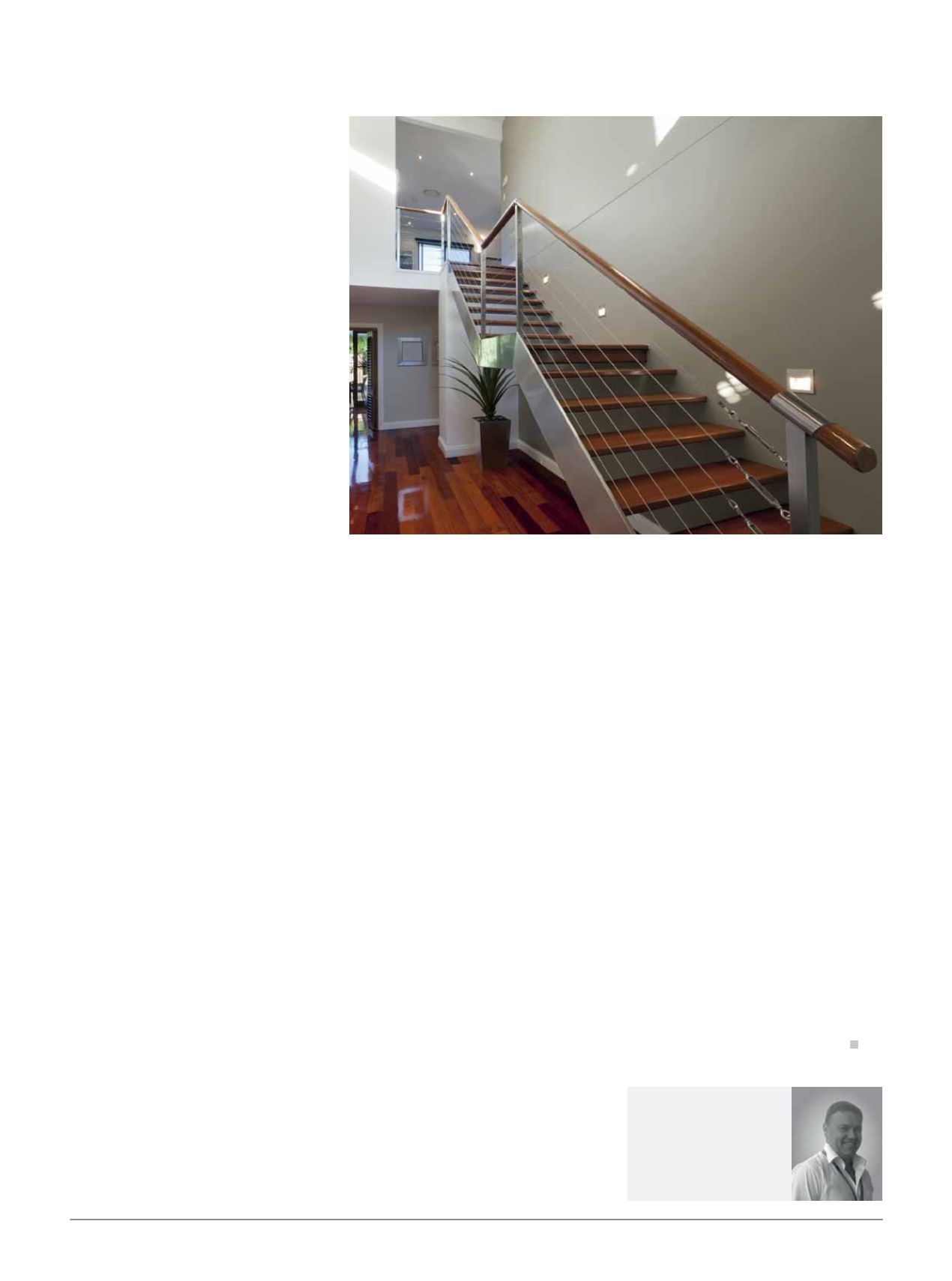
 www.buildingconnection.com.au
www.buildingconnection.com.au
3 1
handrail provided for each flight of
stairs
3. Shape and size of handrails – the BCA
is silent on this matter.
So, what will my 20 riser flight of stairs
look like?
To improve safety and usability the
flight will have the following attributes:
∫ The stairs will be one metre wide. The
actual width is inconsequential until
we consider handrails, at which point
the stair width becomes critical if we
are to effectively use the handrails,
which brings me to point 2.
∫ My flight of stairs will have handrails
on both sides, which is a 100%
improvement on the DtS option of
only requiring one handrail.
Why does this matter?
In a 1996 study it was found the
older people rely on hand rails to
support body weight and to control
descent speed. Further, it was found
that older people were generally unable
to descend four consecutive stairs
without the aid of a handrail. So the use
of two handrails allows older people to
support their body weight and control
descent speed.
This feature will significantly
improve the usability of the stairs
for older people, reduce fatigue and
improve safety – our key performance
requirements. It was also found in a
1998 study that handrails help people
maintain balance on a flight of stairs.
So again the use of two handrails will
significantly improve safety.
∫ The shape of the hand rail has a
critical role in making and maintaining
hand contact. In a 1998 study it
was found that a hand rail having a
circular section and between 32-
50mm was the most effective size
and shape. The DtS provisions are
silent on these matters, meaning
we could provide a 100 x 100mm
timber handrail – compliant, but
ineffective. Again, by providing two
round handrails of optimum size we
have significantly improved the key
performance benchmark of stair
safety above the DtS.
∫ Finally, is a long flight really a more
dangerous option? Typically, studies
suggest that the more risers in a flight
of stairs means the safer that flight of
stairs is. Indeed, the probability of an
accident decreases on flights having
more than six risers. But why is this the
case? Firstly, often there are no visual
cues to warn users of a small flight
of stairs in their path of travel, so we
don’t adjust our walking speed or gait
which can lead to falls.
Secondly, over long flights we quickly
adapt and adjust our proprioceptive
feedback to effectively negotiate the
stair geometry – this does not happen
as readily with short flights. So it can be
demonstrated from published studies
that a longer flight is statistically safer,
again meeting this crucial performance
requirement.
As a final note, the Building Code
of Australia (BCA) does not require
handrails on flights less than one
metre high. So the most statistically
dangerous flights don’t require
handrails – a critical element shown to
be effective in preventing falls.
The studies that I have referred to
are all peer reviewed and published in
reputable journals, but could they be
considered a form of expert judgment
to support the performance solution?
The BCA definition of Expert Judgement
means the judgement of an expert
with qualifications and experience
in the matter. This would suggest
that the studies could be used by an
occupational therapist, access or
ergonomics consultant to support the
performance solution.
Two final points. This article is not a
criticism of the BCA. Always remember
that the BCA is minimum standard
and not always best practice so where
evidence suggest possible ways to
improve outcomes, these can always be
used. We can always go better, just not
less than the BCA. And finally, would I
approve this performance solution? I’m
not sure, as there have not been enough
judgements to see how the courts would
view the use of a performance solution
where there an injury or death. As they
say, the jury is still out on this one.
The number of risers and shape of handrails play an important role in determining
whether a flight of stairs is deemed safe or dangerous.
Dr Darryl O’Brien is Head
of Course, Undergraduate
Built Environment, at CQ
University. He is a member
of the Australian Institute
of Building Surveyors.
















